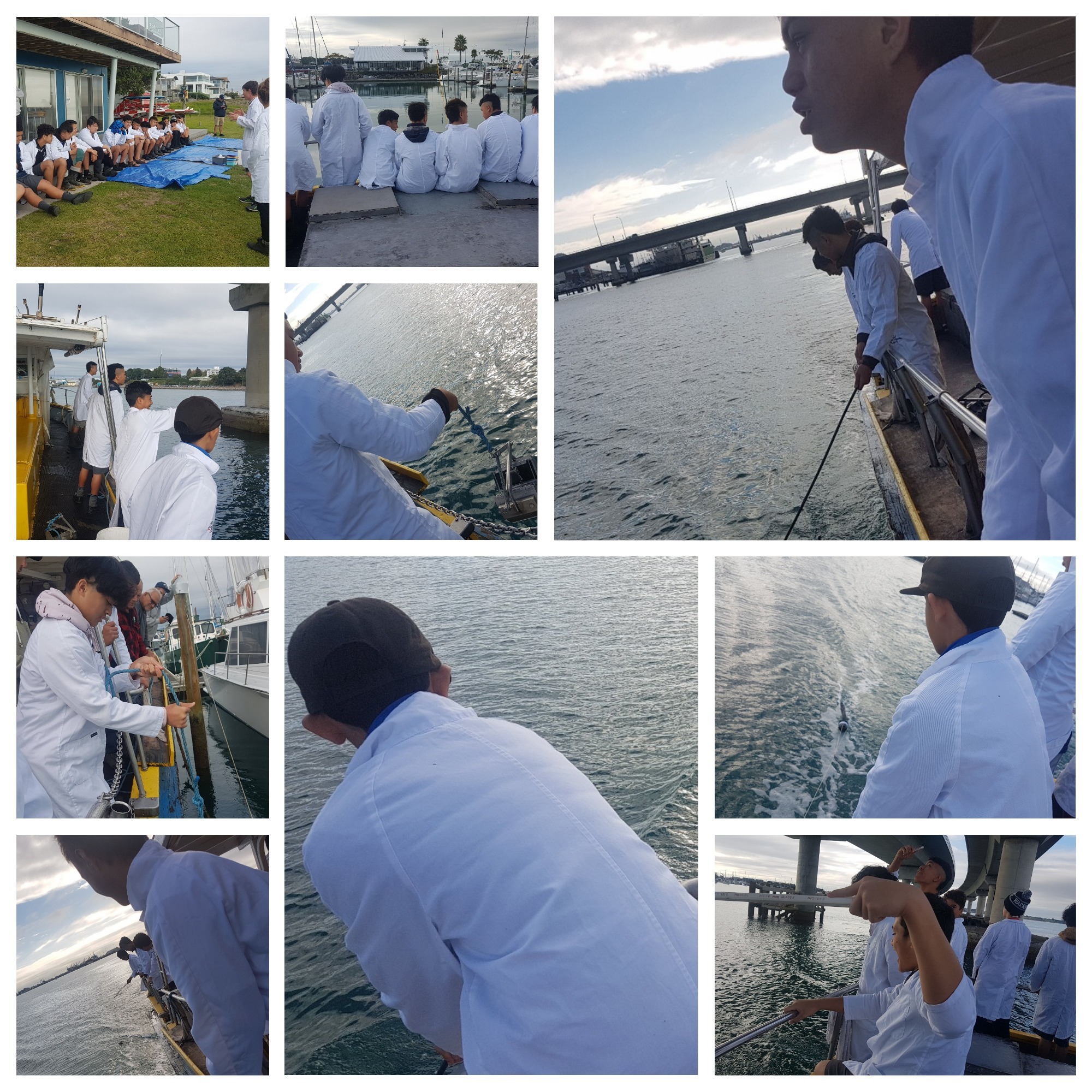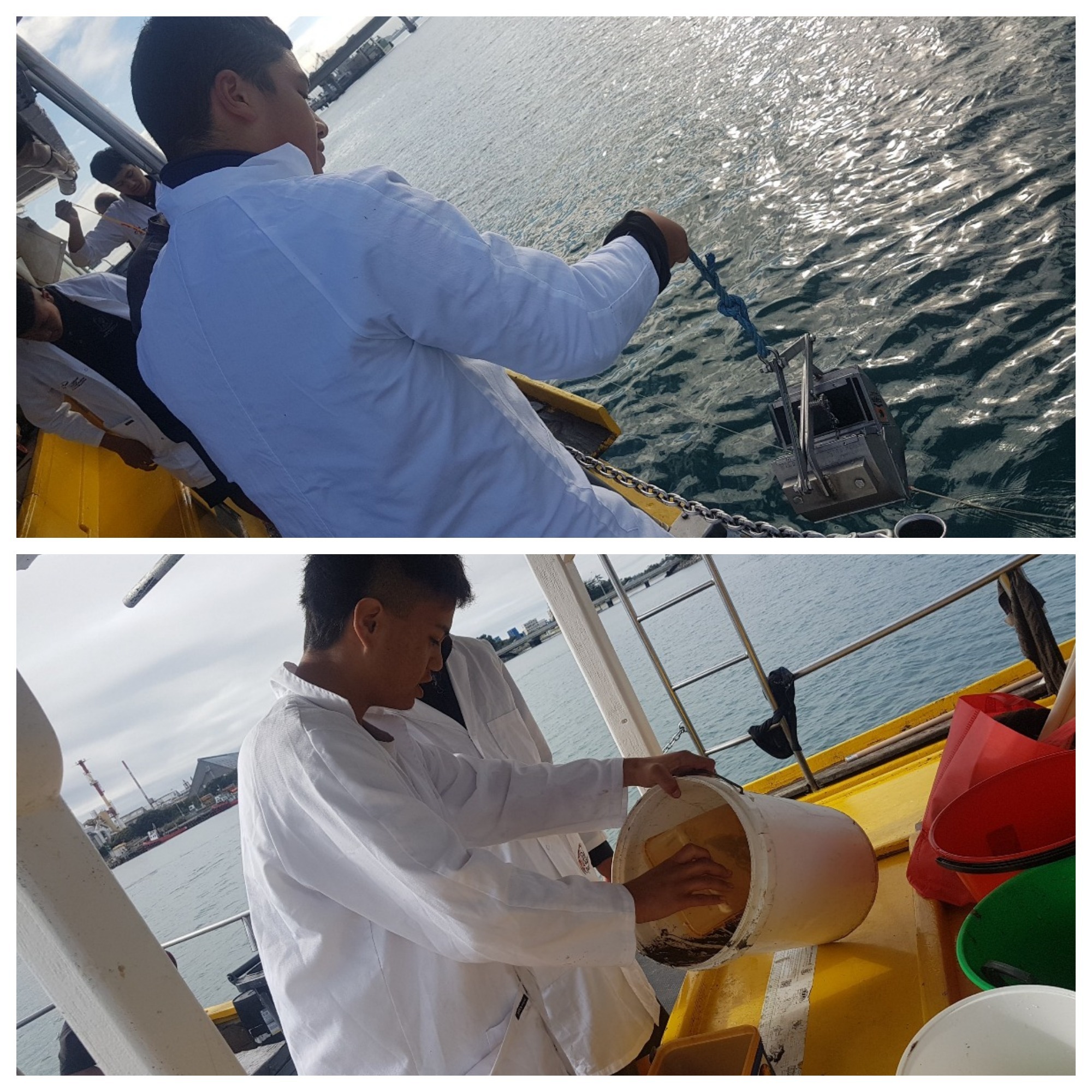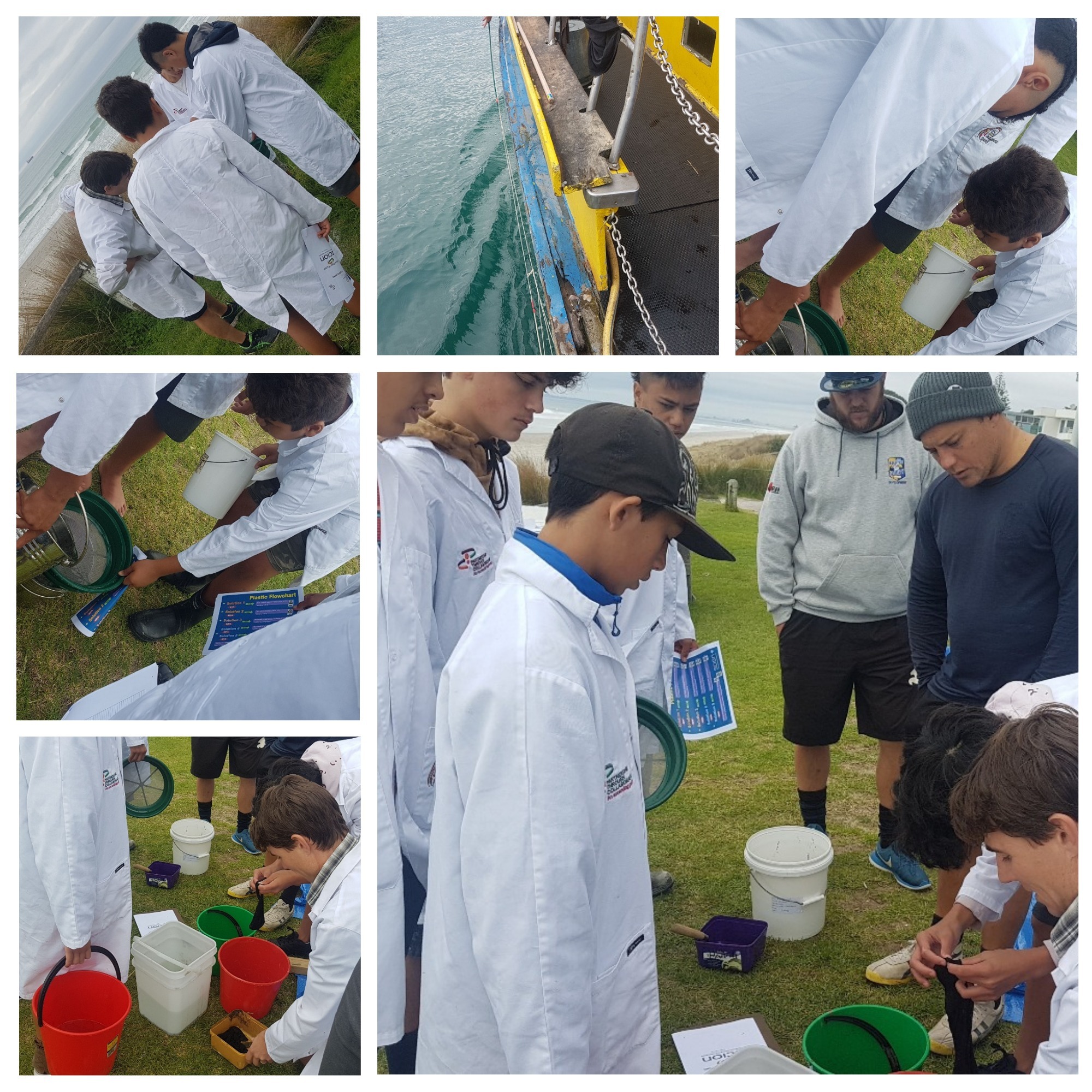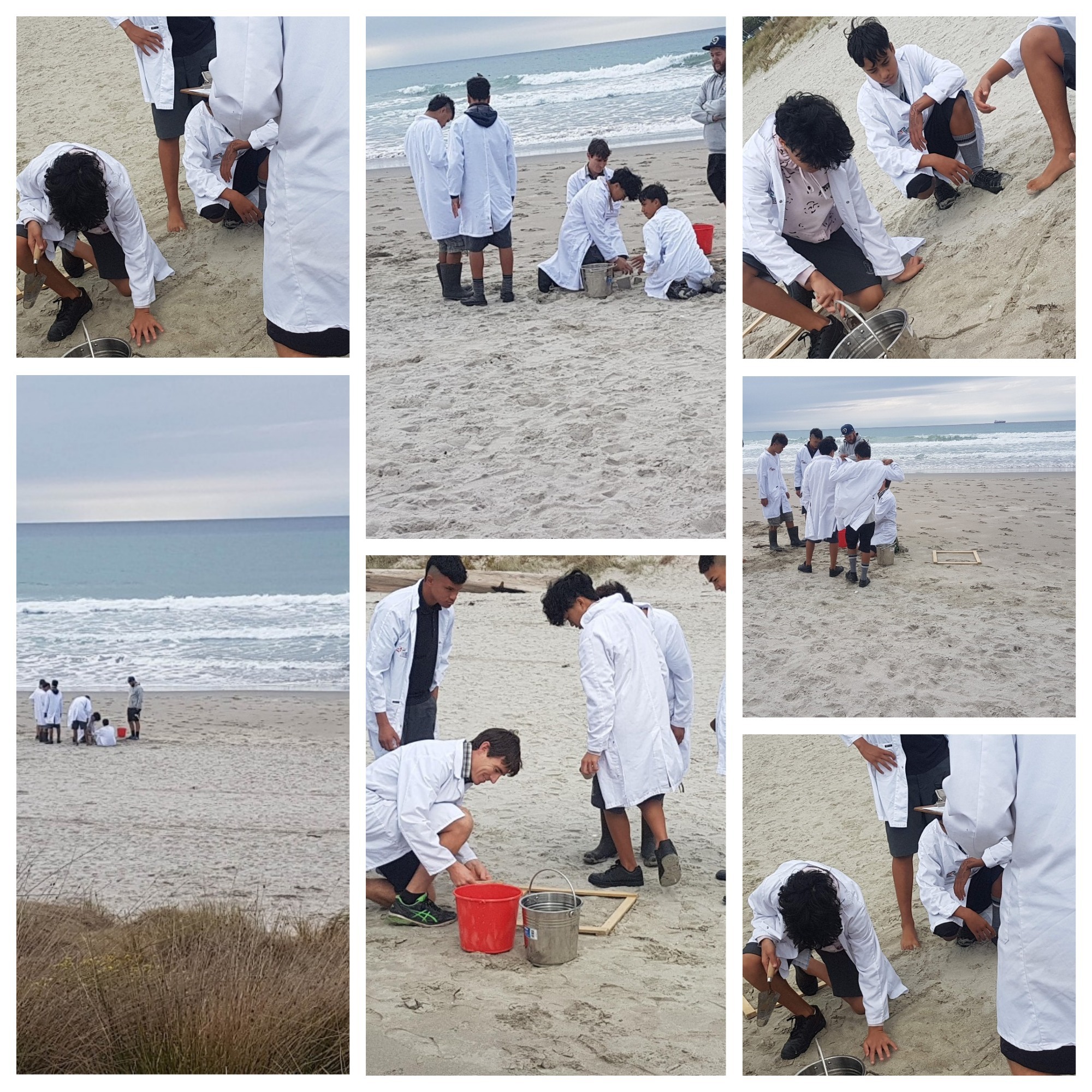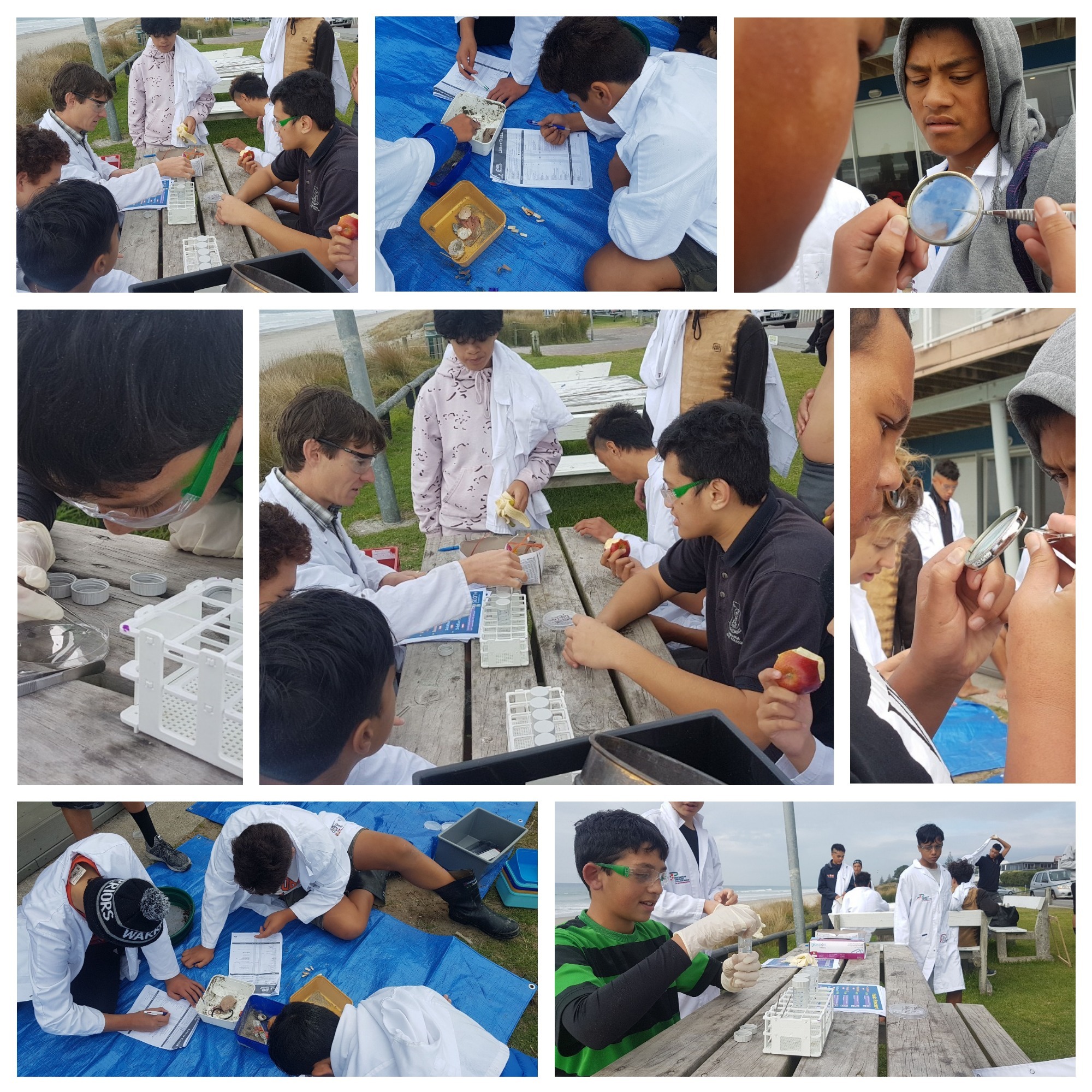Microplastics Tauranga harbour and Omanu beach
Tauranga boys set out to investigate microplastics pollutants on their beach and harbour. Skipper Brett from Tauranga charter ably taught the boys how to take readings of various geographical locations at sea as our rangatahi trawled and grabbed ocean samples.
Dr Jamie Bridson from SCION research worked methodologically with those on sand sampling, applying very rigorous scientific techniques. Taken together this represented a reasonable sample of surface water and beach sand under investigation.
Mishra et al (2019) in their article Marine microfiber pollution: A review on present status and future challenges reports ‘Microfibers are emerging pollutants with widespread distribution in the environment and have adverse ecological impacts. Approximately 2 million tonnes of microfibers are released into the ocean every year from various sources, of which 700,000 micro fleeces are released from each garment through domestic laundry’.
As these plastics do not break down, the probability of finding microfibers is very high. In addition, microplastics can attract chemical pollutants from the water and maybe eaten by plankton and larger filter feeders such as clams and oysters’. The consequent effect is that they can harm the health of our marine creatures’ reports Judith Weis in her article Environmental and Textile Scientists Combating Microplastic Pollution.
“Initial microplastic and litter survey results from Omanu beach and Tauranga bridge harbour - 27.5.19”

